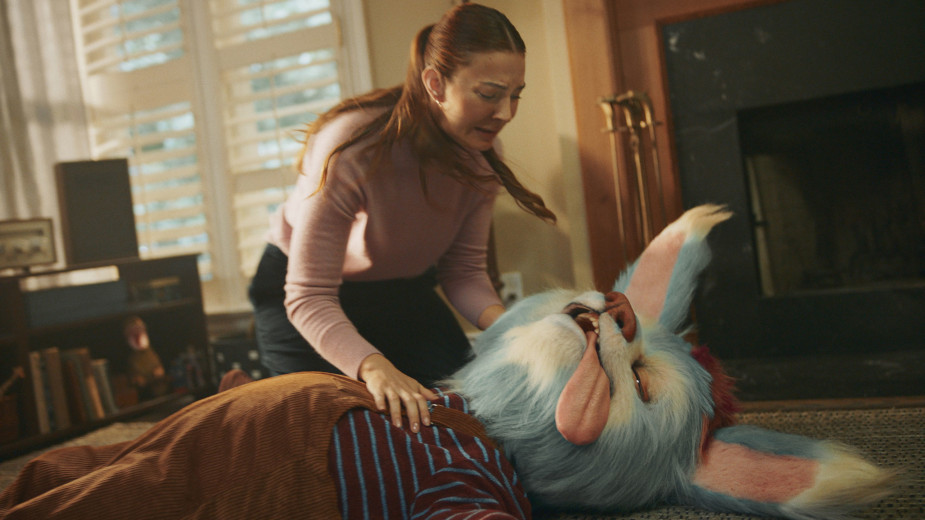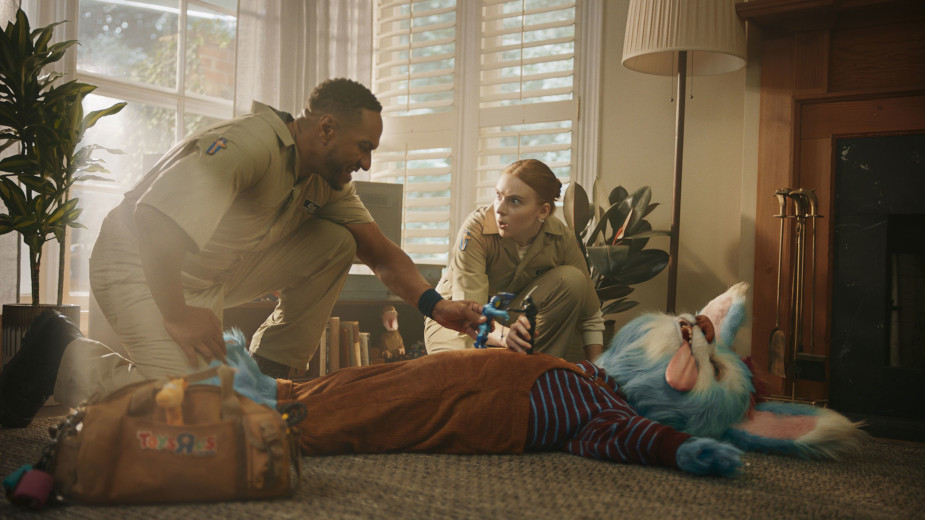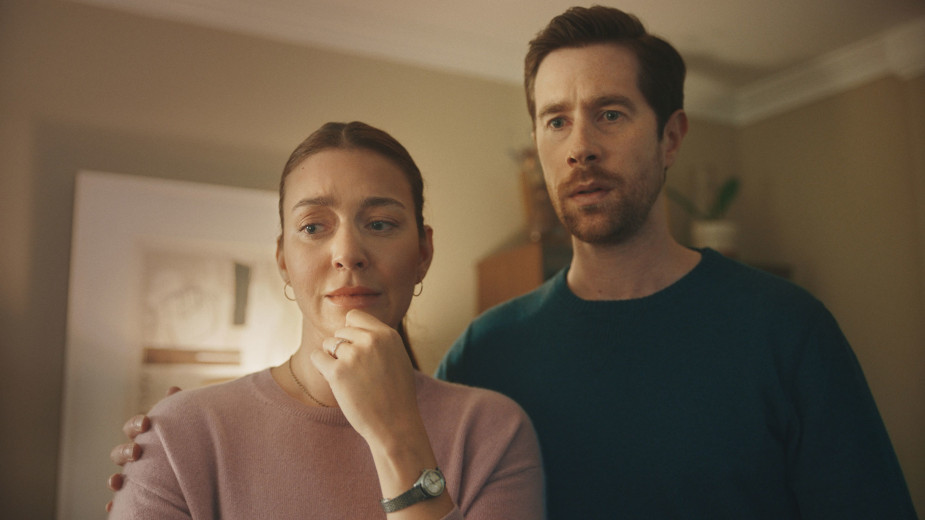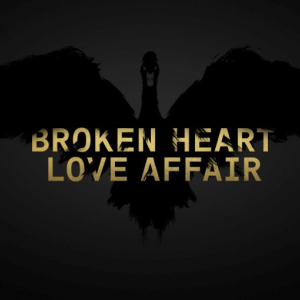
Why Toys“R”Us Brought Back Imaginary Friends

While there have been many gripes about the negative effects of excessive screen time for today’s youth, perhaps one of the most alarming is the threat it poses to the development of imagination-based capabilities. A great example of this is the alarming rate at which imaginary friends have been dying out in recent years. In 2019, a survey of daycare staff in the UK saw
72% of respondents say that fewer children have imaginary friends than they did five years ago, while 63% indicated that they thought screens are making children less imaginative.
While quite specific, the study does paint a damning picture. After all, how can children explore their imaginations and conjure up new friends when they simply no longer have time for themselves, or are constantly shoved in front of a screen? It’s for this reason that toy retail company Toys“R”Us Canada wanted to get involved. Announcing its new agency partnership with Broken Heart Love Affair (BHLA), the two worked together to create a campaign that quite literally revives imaginary friends. Launching ‘Imagination Included’, the platform is anchored by a video spot called ‘Mr. Ferguson’, in which a giant imaginary rabbit - the titular Mr. Ferguson - is revived by Toys“R”Us EMTs through the power of amazing toys and imagination - demonstrating how Toys“R”Us’ assortment of products can do the same for today’s children and their playtime.
Directed by The Salmon’s Mike Warzin, the ‘Mr. Ferguson’ ad is running as 60s, 30s, 15s and six second spots across online video, cinema, and pre-roll, and is supported by social, out-of-home, catalogue advertising and in-store.
LBB’s Josh Neufeldt sat down with BHLA SVP, strategy Kristy Pleckaitis, CCOs Jaimes Zentil and Craig McIntosh, Toys“R”Us director, marketing Allyson Banks, and Mike to learn more about saving children’s imaginations, and what it took to bring Mr. Ferguson to life.
LBB> This campaign marks the launch of the ‘Imagination Included’ platform - a long-term strategy that is still in its infancy. As such, what was the brief, and how did it lead to the introduction of ‘Mr. Ferguson’?
Kristy> Toys“R”Us is, and always has been a beloved brand in Canada, with many of us working on the campaign having our own fond memories of walking into the store as children and being struck with the awe and wonder of walls stacked with toys. Our job was to rebuild the emotional connection we now-adults once had with the brand, and get Toys“R”Us back on the radar. The creative brief tapped into the unfortunate phenomenon of kids no longer having the freedom and space to flex their minds and creativity. We leaned on the magic core of the brand to give that gift of imagination back to them, balancing the fun with a very pointed tension.
Allyson> It wasn’t exactly a short document, but our brief to Broken Heart Love Affair asked for one thing: to break through the media noise to connect with parents. We want to always be the brand of childhood - to remind everyone of the best and most important parts of being young and free to play, pretend, and imagine without limits.
LBB> Why is protecting imagination of such importance to Toys“R”Us?
Allyson> Imagination is a child’s most valuable resource. However, we live in a world that demands more and more of our attention earlier and earlier - from media content to the pressure parents feel to give kids every possible advantage with classes and activities - which takes time away from the imagination. As such, Toys“R”Us wanted to remind grownups to protect that precious space. It’s essential. It’s an escape. It’s an incredible source of joy that grownups remember from their own childhoods – all bound up tight with Toys“R”Us.
LBB> The spots are directed by Mike Warzin - what made him the right person for the job?
Jaimes> This was our first go round working with Mike. He’s just an awesome dude! We hit it off in our first conversation, and found that we had a lot of the same sensibilities, reference points and level of passion for toys, pop culture, and vision for the project. Through our casting callbacks and on set, we witnessed how deftly Mike directs talent - specifically kids - which is an art form unto itself. And beyond that, he’s just super down to earth and a joy to work with and be around. Don’t ever change, Mike!
LBB> Mike, when starting with this campaign, what immediate ideas came to mind, and why was this something you were keen to be involved in?
Mike> I was into the script before I even finished reading it. The beats were all very clear. On top of that, the team at the agency did a great job of painting a picture of the tone they were after, which made me love the script even more. Then we had a great chat over Zoom, and we realised that the way I saw it was the way they saw it…and then we shot the thing.
LBB> How did the idea of reviving a dead imagination come to pass?
Craig> We had the client in agreement with a great strategy that we felt would resonate with parents and kids alike, in terms of playtime feeling scheduled (rather than an opportunity for creative play). There were a lot of avenues open at that point, and we explored many of them. Once we keyed in on research findings that imaginary friends are far less common today, it put a sharp point on what we were building towards, and the creative that came from that had an inherent element of immediacy and importance.

LBB> Building on this, tell us about the research process! What key takeaways came from it, and how did they impact the way you approached the campaign?
Kristy> We started with an idea that was both anecdotal and based on research: children these days don’t have time to be bored. Parents are keeping their schedules full of activities, sports, and entertainment. On the surface, it seems like a good thing; they are moving around, developing interpersonal skills, and learning something new. But when you dig a little deeper, you begin to understand what we are sacrificing at its expense: creativity. When we’re bored, we find something creative to do with our minds. That’s where and when imaginary friends are born. So, when we saw there was a decline in these make-believe characters, it became the device we used to tell our story.
LBB> What was the writing process like? How did you decide which Toys“R”Us toys you wanted to include, and as a whole, how did the piece come together?
Jaimes> This was a great opportunity to write for an iconic brand steeped in so many of our great childhood memories. Obviously, in our industry creativity is a huge part of what we do every day, and it’s something we value immensely. So, in terms of calling out how children’s imaginations seem to be atrophying, in a way, this was as much of a purpose-based ad as we could conjure for a retail toy company.
Once the script was starting to take shape, we chose to feature what you might call more classic or timeless toys. By using the toys we did, we were aiming to find elements of nostalgia and universality that something new and unfamiliar might not spark, and avoid any comprehension issues new toys might create. All credit to our client, it was super helpful to be able to consider the best toy choices conceptually, rather than feature the hottest new releases.

LBB> Let’s talk about the focal point: Mr. Ferguson. What went into bringing him to life, and how did you settle on a name for him?
Jaimes> Mr. Ferguson is a figment of the child in our story’s imagination, and not based on any particular existing toy. For that reason, he is more of an amalgamation of different characters and animals, rather than any one particular thing. The design was a collaboration between us, Toys“R”Us creative director Sal Stranges, Mike, and the character designers. He was born out of a mutual love of classic ‘80s practical, and analogue character designs like Howard the Duck, Alf, Falkor, and all things Jim Henson.
For the character design and build, we enlisted Legacy Effects, an Oscar and Emmy nominated FX studio that specialises in practical builds for the film industry. Mr. Ferguson is a life size costume with animatronics embedded to operate the mouth, eyes, and ears - to convey emotion through his expression.
Having a deep appreciation for practical characters in common, we all agreed that being able to have Mr. Ferguson emote using animatronics would feel quite special on film, and would bring us - and many kids of our generation who are now parents themselves - right back to those magic moments of play and imagination that our childhoods held. As for his name, we feel we couldn’t have agreed on anything better suited.
LBB> Tell us about the casting process! Were you involved, and how did the resulting shoot go?
Mike> Casting is a huge part of the process for me, if not the most important! I liked how normal this cast felt, and how committed to their performances they all were. In fact, we pretty much had each of their roles figured out in their callbacks, which made the actual day on set super fluid because we’d spent the time shaping the characters a week before (during casting).
In terms of the shoot, we had a fun and productive day on the outskirts of Toronto (just off Kingston Ave.). I love shooting in the Greater Toronto Area, and the vibe on set was at a high level the entire day. Lots of laughs and overall good times.


LBB> Creating an ad that would be impactful as 60s, 30s, 15s and six second spots must have been a challenge! How did it impact the way you approached directing?
Mike> It’s definitely a discipline, but it’s incredibly rewarding when you pull off telling a story with a beginning, middle and end in 60 (and sometimes 30 seconds). It’s different for every director, but for me, it’s all about having a plan and testing the plan long before you’re actually on a set with actors and a crew.
LBB> Who provides the voice of Mr. Ferguson? How did you find the right voice, and what made you choose the person you did?
Craig> Mr. Ferguson was voiced by comedian and voice actor, Brian McGuinness. We auditioned a ton of voice actors, but so much of the casting we received were voices that were too cartoony, high-pitched, or affected. We were going for a naturally funny voice that sounded human and grounded. Brian’s real voice made us laugh, and he was great at improv!
LBB> The music is brilliant - setting the tone of the ad perfectly. Who did you work with to score this project?
Craig> Jared Kuemper from Berkeley Music created this for us. Together with our editor, Griff Henderson, the four of us all knew exactly what we were going for. Start off with a sombre PSA-style piano, then quickly switch to the action genre when the Toys“R”Us EMTs burst through the door.
LBB> What challenges have you faced during this project? How did you overcome them?
Craig> Believe it or not, this project was extremely smooth. It really helped that our two clients, Allyson Banks and Salvatore Stranges, had the ultimate trust in us and in our killer director, Mike. Truly one of the best experiences in our careers.
Allyson> The Toys“R”Us Canada brand has some really distinctive DNA, like our iconic jingle and our beloved mascot ‘Geoffrey the Giraffe’. We love these elements, and we lean on them a lot. Throughout the creative process, we had two options: do the expected, or do the unexpected. BHLA pushed us to take some big risks. The biggest challenge was to get comfortable being uncomfortable.
We’re also seen as a brand for kids, so it was new for us to be creating something squarely aimed at parents and other grownups: the old-school Toys“R”Us kids.

LBB> Since its launch, how have people reacted to the campaign? Are people loving Mr. Ferguson?
Kristy> We have gotten so much love for this campaign already, and I think it stems from a myriad of places. Firstly, the spot highlights a reality that really hits home with parents, but also ends on a hopeful note that imagination still exists and can be nurtured. Secondly, it’s nostalgic. Today’s grandparents and parents hold a special place in their hearts for the brand, and are reminded of their own experience with Toys“R”Us. And finally, it’s just fun! Mr. Ferguson is the make-believe character we all wished was real when we were kids. Watching him come to life (or back to life) puts a smile on everyone’s face.
Allyson> We’re still in the early stages post-launch, but so far everything is incredibly positive. The industry has really embraced the creative and it’s really resonating with the audience.
LBB> Given the fact that this is the start of a long term platform, what can we expect from the BHLA/Toys“R”Us collaboration down the line?
Kristy> It’s difficult to say how this platform will come to life creatively down the line, but we will always root ourselves in imagination, which in and of itself is such a big idea that it really can go anywhere. For as much as Toys“R”Us helps kids flex their creativity, the brand is also putting our own team’s creativity to the test to see what we can come up with. It really is a dream come true for our agency.
Allyson> Working with BHLA has been so much fun. In creating Mr. Ferguson, we also developed campaign extension concepts for ‘Imagination Included’ that we intend to explore further in 2023.

LBB> Is there anything you’d like to say to parents about the importance of protecting the imagination of today’s youth?
Allyson> I suspect most parents have said some variation on ‘It’s all going so fast’, or ‘I don’t know where the time went’. Childhood just feels incredibly brief these days. So, kids need time and encouragement to discover themselves through play, and to let imagination help shape their growing selves.
As parents, we often think back to a time of less responsibility - to wish ourselves back into being kids again. Parents need to protect that childhood space and resist the temptation to alleviate boredom by filling a kid’s every moment with activities and entertainment. There’s freedom in boredom - kids will fill that space themselves with imagination.
LBB> Did you have an imaginary friend while growing up?
Jaimes> I had only imaginary friends growing up. Sadly, most of them are gone now. One did a couple of years in Millhaven for armed robbery. Another one runs a Pizza Hut in West Gwillimbury.
Allyson> I did, briefly. I didn’t like sitting at a desk in first grade, so I pretended there was a little critter named Mop that lived under the seat of my chair, and he would overhear all the things that happened in class. Mop would also come home with me in the afternoon in my backpack, and I’d chat with him about ‘our’ day. He just let me escape into a make-believe world parallel to my real world - like having a pretend teammate or partner at school.
Mike> Not really, but I spent years of my life sitting on the floor playing with toys and creating scenarios and situations in my room. So much time spent playing with toys! Because of that, I appreciate and connect with the insight in this work. That’s why I wanted to do it, and thankfully the fine folks at Broken Heart Love Affair were into that idea too.













